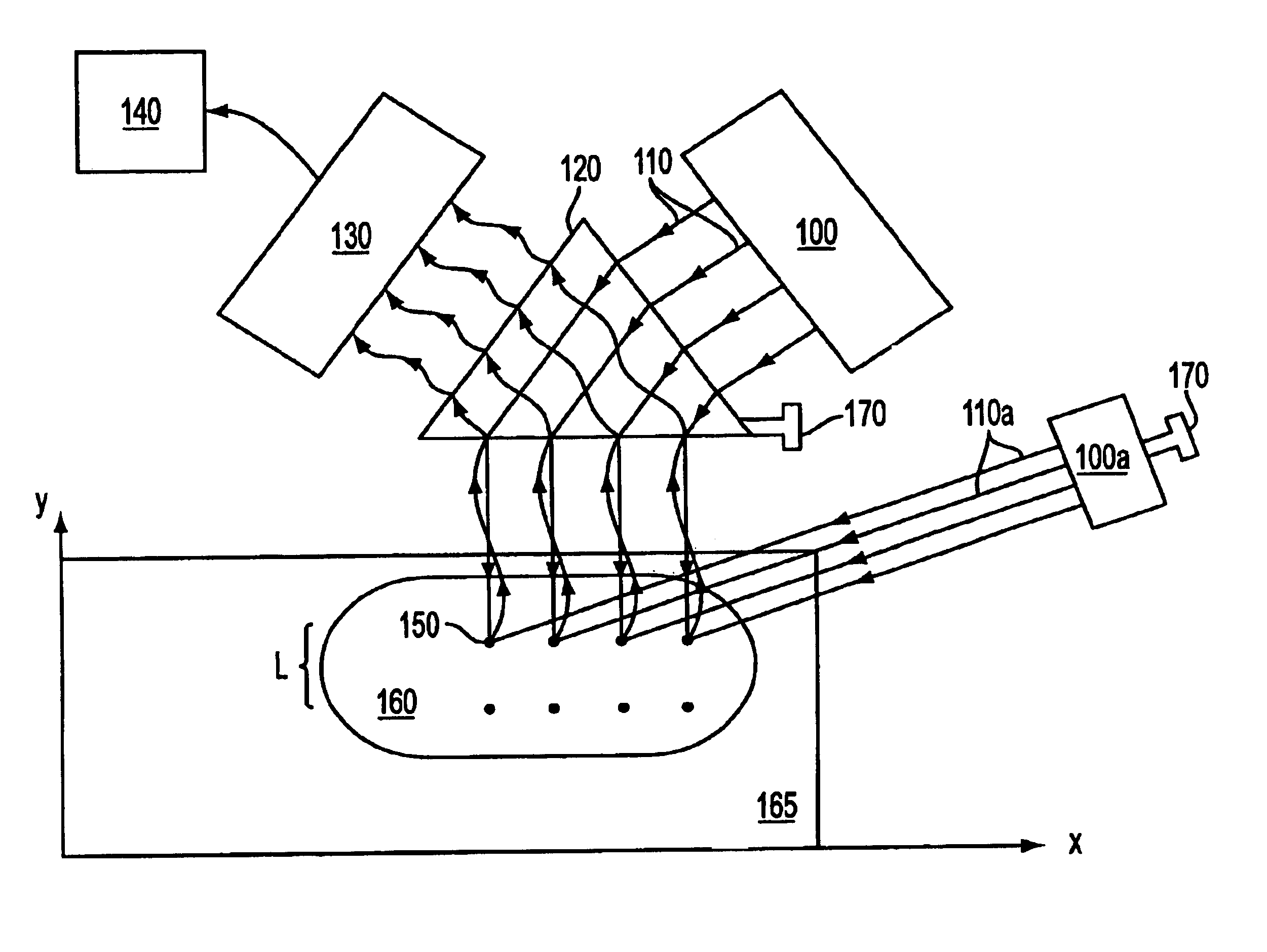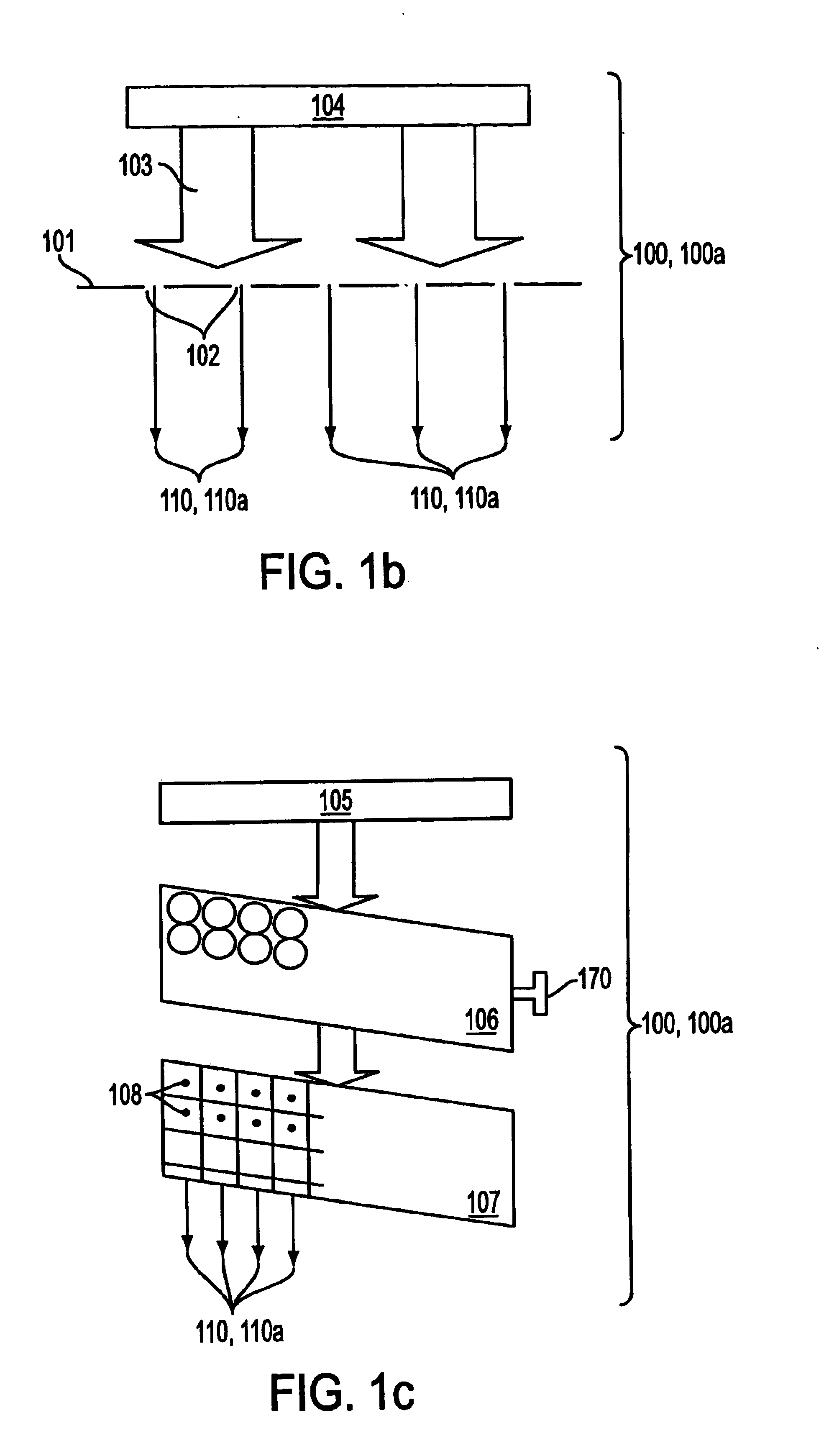Spot grid array electron imaging system
- Summary
- Abstract
- Description
- Claims
- Application Information
AI Technical Summary
Benefits of technology
Problems solved by technology
Method used
Image
Examples
example 1
[0051]FOV=1 mm=1000 micron[0052]DR=10 Giga-pix / sec=1010 pix / sec[0053]P=100 nm=0.1 micron[0054]→N=1000 / 0.1=10,000=104=>a 100 by 100 array;[0055]→FR=1010 / 104=106=1 mega-frames / second[0056]→V=106*0.1 micron=100 mm / sec
[0057]For a given pixel size, increasing the FOV is key to obtaining a larger number of pixels in the array, and hence to reduced frame-rates and stage velocity requirements (when using interleaving as shown in FIG. 3b, the number of rows and hence array elements increases and the frame-rate goes down, but the stage velocity requirement remains unchanged). This is an issue when using electron beam imaging and an electron-imaging column to focus multiple electron beams.
example 2
[0058]If the pixel size is reduced to 10 nm and the FOV is increased to 10 mm, the total number of array spots is N=10,000 / 0.01=106. Keeping the frame-rate (FR) at 106 frames / second, the data rate (DR) of the present invention becomes 1012 pixels / second or one Tera-pixels / second. The stage velocity (V) at this DR is 10 mm / sec. This system according to the present invention is three orders of magnitude faster than any prior art system. Of course, such a system requires conventional image acquisition and image processing systems capable of handling a high data-rate.
PUM
 Login to View More
Login to View More Abstract
Description
Claims
Application Information
 Login to View More
Login to View More - R&D
- Intellectual Property
- Life Sciences
- Materials
- Tech Scout
- Unparalleled Data Quality
- Higher Quality Content
- 60% Fewer Hallucinations
Browse by: Latest US Patents, China's latest patents, Technical Efficacy Thesaurus, Application Domain, Technology Topic, Popular Technical Reports.
© 2025 PatSnap. All rights reserved.Legal|Privacy policy|Modern Slavery Act Transparency Statement|Sitemap|About US| Contact US: help@patsnap.com



